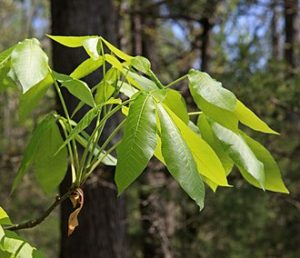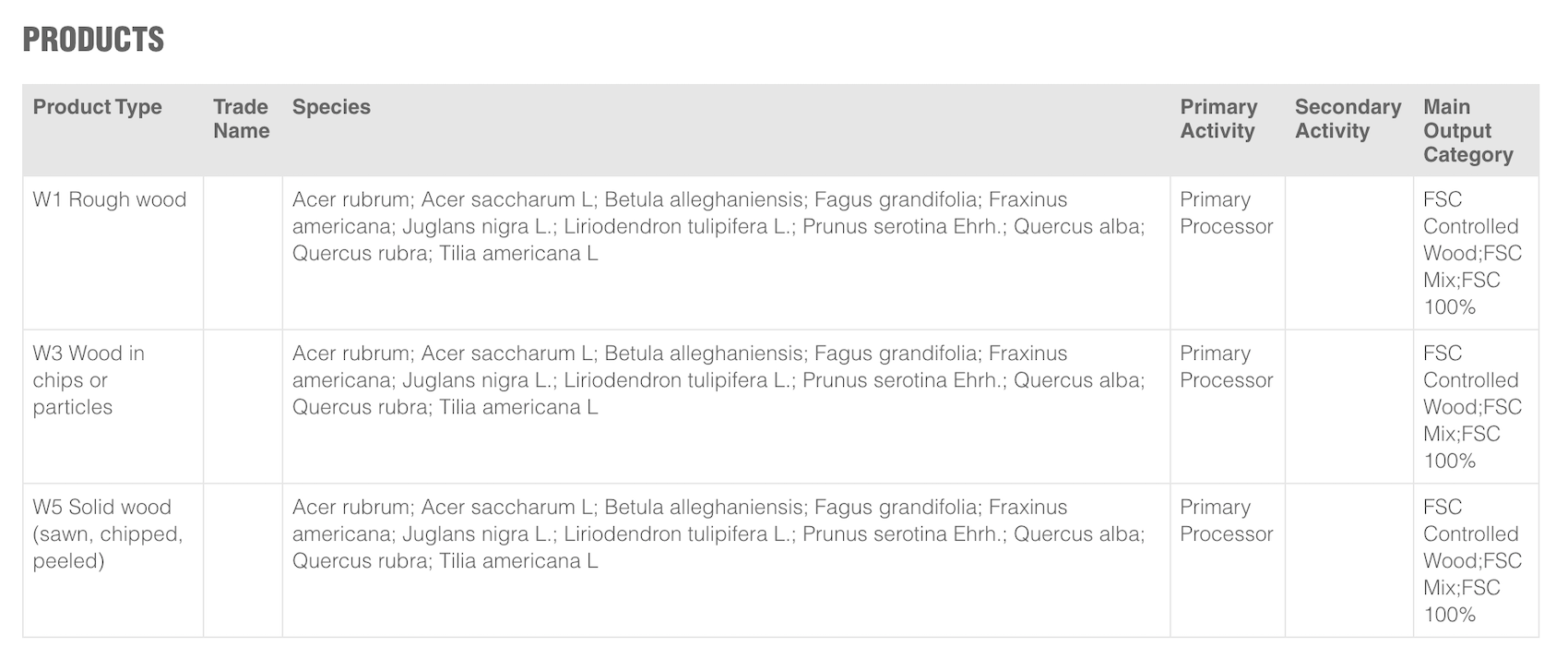 For the past several years, the Forest Stewardship Council (FSC) has invested considerable effort and energy into communicating directly and forthrightly with their community of stakeholders. At the core of this well-intentioned strategy has been its Global Strategic Plan (GSP), published in 2015 and promoted consistently to the present. Here at MixedWood, we like the GSP, not least because it features objectives and values we share. In particular, Strategy 1, which promises to “Streamline standards, increase consistency, improve governance…” Supported directly by “Critical result area 1.1, calling for “…stabilizing and simplifying FSC policies, standards, and procedures…”
For the past several years, the Forest Stewardship Council (FSC) has invested considerable effort and energy into communicating directly and forthrightly with their community of stakeholders. At the core of this well-intentioned strategy has been its Global Strategic Plan (GSP), published in 2015 and promoted consistently to the present. Here at MixedWood, we like the GSP, not least because it features objectives and values we share. In particular, Strategy 1, which promises to “Streamline standards, increase consistency, improve governance…” Supported directly by “Critical result area 1.1, calling for “…stabilizing and simplifying FSC policies, standards, and procedures…”
We applaud the intentions behind these objectives and would like to be writing articles praising its successes. Sadly, we cannot. The fact remains that FSC continues to relentlessly disrupt and complicate its program in ways that leave us duty-bound to challenge. The latest example – detailed below – promises to be a big step backward for the whole program.
Product Groups: Defining Scope
Every Chain of Custody company is required by the FSC standard to define and document the list of products it offers for sale with FSC certification claims. These goods offered for sale are termed the Product Groups, defined by the CoC standard in Section 7. Each company’s list of Product Groups plays a key role in defining the scope of their business and the scope of their certification.
For many companies, the Product Group list might include a single line. For example, a corrugated box manufacturer who manufactures only corrugated boxes. Or perhaps an envelope manufacturer who only sells envelopes. Other companies might need longer lists, such as an office supply distributor who sells a wide range of notebooks, calendars, pencils, bulletin boards, etc.
The essential purpose of the Product Group list is to define the scope of a company’s certification transparently. It also allows their customers to verify their certified status properly and ensures that their certification audits are adequately planned, executed, and recorded. Product Group lists are primarily the responsibility of certified companies, but they are tracked closely by Certification Bodies (CB’s) and listed publicly on the FSC Certificate Database.
Linking to the Trees: Species
Chain of Custody certified products are – by definition – made from forest products. FSC, and its companion programs, SFI and PEFC, exist primarily to promote and support the responsible management and conservation of the world’s forests through marketplace programs like Chain of Custody. Of course, wood is made from trees, and trees are found in a wonderfully diverse variety. In part, that variety accounts for the rich diversity of useful commodity products that they are used.
For as long as people have been using wood, they have used different kinds of wood for various purposes. A dense, tough wood such as American Hickory might be favored for making tool handles, while a soft, lightweight, long-grain fiber like Balsam Fir is processed into pulp for making newsprint. Types of trees or wood have long been identified informally with the common names of commerce – names like Hickory and Balsam – and more precisely using the scientific nomenclature used by botanists and ecologists.. The scientific names are rendered in Latin. For Hickory: Carya ovata. For Balsam Fir: Abies balsamea.
When defining Product Groups for Chain of Custody, the wood species used in a particular product might be an important and defining characteristic. Or it might not. Our two examples illustrate this exceptionally well. A company selling wooden tool handles will want their customers to know that they aren’t just using any old wood, but a type of wood known for its toughness and strength. Not only are they likely to identify the species of the tree their handles are made from, but they might also even feature it, saying (for example) “Genuine Hickory Ax Handle.” This would not be true for a newsprint manufacturer. Firstly, they are selling paper, not wood. Their customers will be interested in their paper’s quality, color, size, thickness, and performance features, but probably not the kind of tree. Generally speaking, the further from the forest a product is – and the less “wood-like” a product is – the less important tree species is.
Since the inception of certified Chain of Custody, species distinctions have been managed practically and consistently. Product Groups are expected to include species identification if the product being described is identified using its species. Hickory tool handles, Oak flooring, Mahogany furniture, etc. FSC defines this requirement in FSC-STD-40-004, clause 7.3 (c):
“…where the species information designates the product characteristics.”
We can quickly see evidence of this in the FSC online certificate database, where Product Group listings are posted. The vast majority of products, for most paper and fiber products, look like this one:

Others, typically solid wood products, look like this:

This approach is practical, easy to apply, and has been in place for many years. It works. So why would we want to complicate things?
Complicating Things: ADVICE-40-004-19
The FSC organization has a “back door” mechanism that allows its staff to amend and modify its standard documents at any time through Advice Notes. Intended to be used to clarify and explain existing requirements, it is still occasionally used to introduce significant new requirements – often with little or no warning. This is just what happened last month with the release of ADVICE-40-004-19. FSC collects and publishes its Advice Notes in a document called a Directive. Advice 19 is found in the latest version of FSC-DIR-40-004, the Directive for Chain of Custody, on page 29.
Download the whole document from the FSC Document Centre here
Download Advice 19 separately here
The Advice Note effectively revises clause 7.3 of the CoC standard, including a long list of new requirements:
- Essentially all CoC companies have to collect, record, and update species information for all of their CoC products, whether or not it is practically or commercially relevant.
- Scientific nomenclature (genus and species in Latin) is required.
- Errors or omissions found during audits will be a “fundamental failure” requiring major non-conformance.
The Advice Note includes a one-year transition period, beginning on 12 August 2020. This means that companies who have not collected and recorded species information for all of their FSC-eligible Products will be subject to major non-conformances at their next audit. This also seems to apply to companies who attempted to collect the required information but made mistakes. Experience tells us that there will be a lot of mistakes.
A Big Deal?
MixedWood has been asking others in our network about this new Advice Note. Opinions about its significance seem to differ quite a lot. On the one hand, some assume that the whole thing will blow over. FSC can’t expect thousands of printers to maintain up-to-date, error-free species lists, can they? Maybe not.
Others tell us that implementing this new requirement will be easy. Everyone will simply have to pass their information requests up the supply chain until they find someone who buys roundwood. Then pass it forward again. Write the result down, and you’re finished. We aren’t so confident. This situation reminds us of a childhood game called “telephone” that involved whispered messages traveling around a room—lots of laughs.
It’s crucial to recall what is meant by a “major non-conformance” finding during an audit. Major non-conformances must be resolved within 90 days of issue, subject to your auditor’s objective review. Failure to resolve in 90 days leads to certificate suspension. Will certified companies (e.g., printers, etc.) be suspended next summer due to misspelled Latin names of tree species? We hope not.
Some Final Thoughts on “Hickory”
Remember our example about Hickory tool handles? We used this as an example of a sort of wooden product where the species content is essential and serves to identify it. But what is Hickory exactly? And how would you identify it on an FSC Product Group schedule? It turns out it’s not so simple.
A quick online search for “Hickory Tool Handles” yields lots of results:
https://healthyhandyman.com/best-wood-for-axe-handle/
https://www.househandle.com/grades.htm
https://beaver-tooth.com/collections/hammer-handles
If we try to define Hickory, however, it gets a bit complicated.
https://www.wood-database.com/?s=hickory
https://en.wikipedia.org/wiki/Hickory
https://www.fs.usda.gov/treesearch/pubs/32182
According to the US Forest Service, there are 21 species of Hickory in the US, including eight commonly in commercial use, of which it recognizes four as “True Hickories.” They are all classified in the Genus Carya, and properly identified (according to FSC) this way:
Carya laciniosa (shellbark hickory)
Carya glabra (pignut hickory)
Carya ovata (shagbark hickory)
Carya tomentosa (mockernut hickory)
What of the other four? They include Carya aquatica (water hickory), Carya myristiciformis (nutmeg hickory), Carya cordiformis (bitternut hickory), Carya illinoinensis (Pecan). All in the same genus, including one – Pecan – that isn’t even commonly called a Hickory. Which of these are Hickories? All of them, of course!
A search of the FSC certificate database (CoC only), using “Carya” in the species field yields 1260 results! Narrowing to only the USA, we find 421 companies, which include Hickory in their Product Group lists. How many lists all eight commercial species? We can’t find even one. Here is a typical example:
Can this confusing puzzle be sorted out? Indeed, it can. But it won’t be free. It will take time, effort, and expense. Lots of time, effort, and cost. For what purpose?
Bottom Line
FSC staff has broad authority to issue new requirements like this one unilaterally. So our comments, and any that you may add to the discussion, may be too little, too late. Can we learn to live with this new requirement? Yes. We think we can. But the cost will be enormous.
Consider this brief analysis:
- 43,486 CoC certified companies globally (2474 in USA);
- Assuming that 2/3 do not currently list species in their Product Group lists – means that 28,700 have additional work to do;
- Assuming a very minimal 4 hours per company and $100/hour, the net cost = $11,480,000.
It is difficult to describe this as anything other than a massively expensive, utterly unnecessary, self-inflicted wound. Coming, as it does, during this extraordinarily challenging year, it feels like a slap in the face.
Are we over-reacting? Please tell us why.